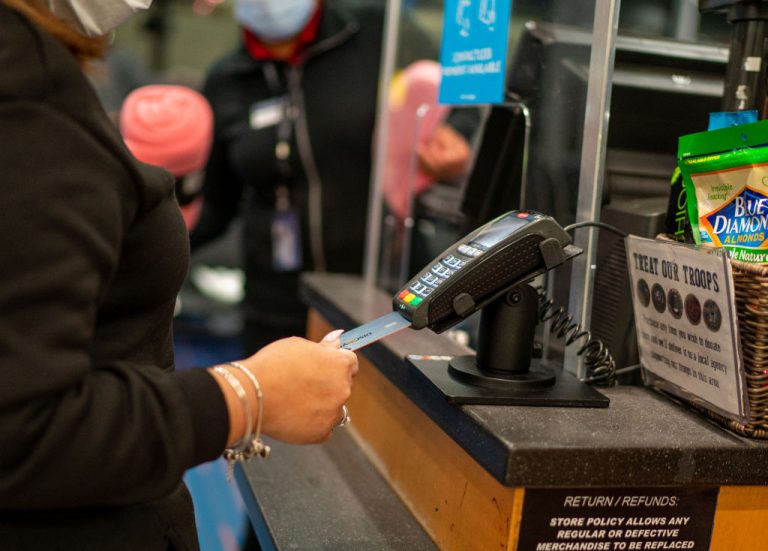Although the battle against record inflation, not only in the United States, but all across the world, has been the talk of the town for weeks, outside of an obviously higher price for gasoline at the pumps, the impact of a worsening economic outlook still remains mostly hidden from the surface of society.
That is, until one looks at U.S. credit card debt statistics published by the Federal Reserve.
The Oct. 7 Consumer Credit data release by the world’s most central of central banks showed as of the most current month calculations are provided — August — total outstanding revolving credit increased by 18.1 percent.
The nation’s outstanding credit now clocks in at $4.68 trillion.
Putting it into context, as of Q3 of 2021, Americans owed $4.355 trillion, a figure already up from $4.185 trillion in 2020 and $3.830 trillion in 2017.
Success
You are now signed up for our newsletter
Success
Check your email to complete sign up
To put the overall numeral into perspective, the Gross Domestic Product for the entire country of Canada in 2020 was only $1.643 trillion, according to data from the World Bank.
MORE ON CREDIT CARDS
- 24 GOP AGs Draw Line With Credit Card Giants on Firearms Sale Tracking Code
- More Bad News for Consumers: Visa and Mastercard Will Hike Merchant Fees In April
- Biometric Payments Are Replacing Cash and Card at Grocery Stores
Moreover, the Fed shows that not only outstanding principal is up, so are interest rates. The average assessed interest account now charges 18.43 percent, compared to 16.45 in 2021 and 14.44 in 2017.
Yet what the central bank’s data doesn’t immediately show is an obvious consequence: those in debt are staying in debt for longer.
A Sept. 19 article published by CreditCards.com found that 60 percent of people who have outstanding debt haven’t been able to pay off their debt for at least the last 12 months.
The publication noted this figure is an increase of 10 percent year over year.
It additionally noted that “40 percent of these Americans say they’ve had their credit card debt for at least two years, 28 percent for at least three years and 19 percent for at least five years. Another 8 percent said they don’t know how long they’ve been in credit card debt.
An Oct. 7 piece by Marketwatch paraphrased “some experts” as being “alarmed” at the pace and size of credit card debt growth because it indicates “that households are using expensive debt to keep spending with inflation so elevated.”
And they may very well be correct. In July, Vision Times noted a large number of both domestic and foreign reports of pawn shops experiencing historic demand increases, with shop owners conveying anecdotes of takers who said they were simply struggling to cover the cost of groceries and gas.
In late September, the Department of Labor’s Office of the Inspector General revealed, when issuing a report to the public that as much as $45.6 billion worth of Coronavirus Disease 2019 (COVID-19) unemployment insurance benefits had been embezzled by individuals making fraudulent claims, that the federal government had disbursed $872.5 billion in pandemic UI stimulus funding into the economy between March of 2020 and April of 2022.
Fed data notably shows that 2020 clocked a net 11.2 percent decrease in revolving credit card debt nationally.
Social and psychological roots
There’s more at hand in the problem than just economic pressures. It can perhaps be said that a large portion of the root is social and psychological influences.
For example, in July, Vision Times likewise covered the story of a survey released by BankRate that found the leading source of negative feelings among all U.S. adults surveyed was the state of their finances.
The figure came in at 34 percent and outweighed even appearance, which clocked 32 percent.
But perhaps more tellingly is that ratio increased to 47 percent in Gen Z and 46 percent in Millennials, and with a higher ratio of financial anxiety being reported by females than males.
When probing further, the outlet found that as many as 84 percent of the duelling generations reported that they felt social media’s influences were playing a negative role in their life.
More than half of all respondents said they had made an impulse purchase as a result of being influenced by an influencer, with 64 percent stating they harbored buyer’s remorse.
One more telling example was also covered by Vision Times in July, which found based on a DebtHammer survey of more than 1,500 Americans aged 18+ with an annual income of at least $25,000 that more than a fifth of respondents stated they had either taken out a loan or funneled money from an existing loan to speculate on digital currencies.
15.3 percent of such respondents stated that they used a personal loan, while an additional 4 to 6 percent said they had used some form of payday loan, title loan, or home equity loan to fund their gamble.
The losses incurred are significant, as both Bitcoin and Ethereum, the two leading digital currencies, are each down almost 73 percent compared to their 2021 highs, and with no signs of returning to their previous levels.
When it comes to conventional markets, in May, economists from the London Business School published a study analyzing data from the U.S. options market showing that retail traders actually lost $1.14 billion during the greatest bull run in the stock market’s history.
Much of the losses were incurred from trades that were directly connected to pump and dump movements in stocks such as AMC and Gamestop that were frontrun on social marketing and social influencing site Reddit, the team found.
















